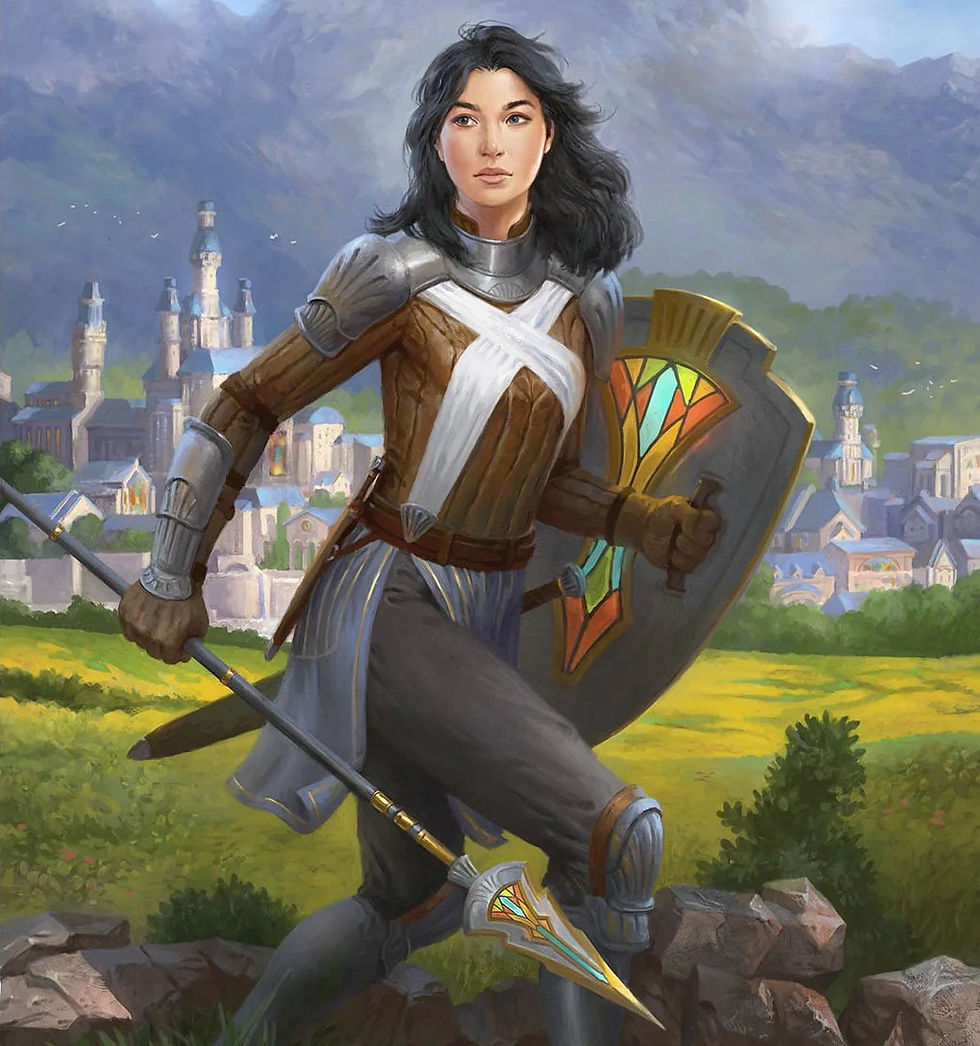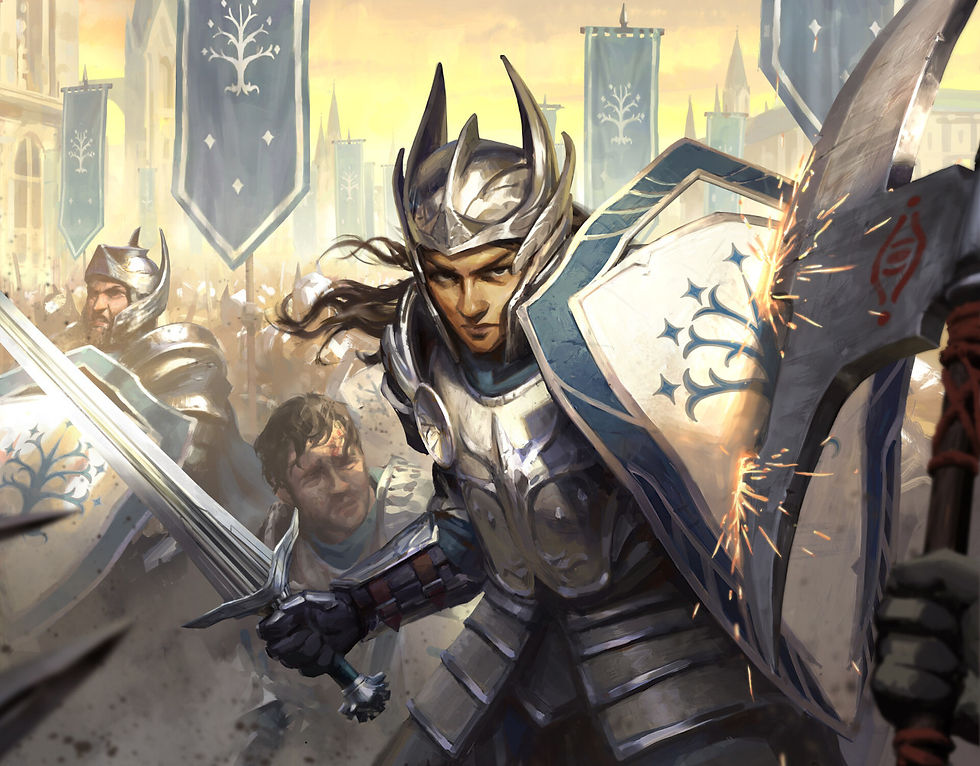Town Guards in D&D
- Errant Dan
- Aug 31
- 4 min read
Right, what’s all this then?
You’re running your game of D&D or Pathfinder. Your players are bumbling around town, being chaos goblins, and causing more problems than they fix. Just as they finish a fight in a back alley, they hear a voice. Right, what’s all this then?
The police have arrived. City Watch, Town Guard, Soldiers. Whatever you want to call them, they are a staple of urban fantasy adventures. The keepers of law and order. But have you ever give much thought to their organizational structure? For my own game, I created a simple rank and organizational structure. Feel free to use and modify it for your own needs.
Ranks
Commander (Knight/Lord)
Captain (Knight)
Lieutenant (Knight)
Prefect – (Constable/Sheriff)
Sergeant – (Supervisor)
Corporal – (Experienced solider)
Private – (New Solider)
Let’s look at how these soldiers would be used in various sized communities. Soldiers are responsible for both defending the community from outside threats and maintaining law and order. Based on this, I estimating that the number of guards are roughly equal to 3% of the population.

Art Credit: Jakub Kasper. Solider Token. WOTC
Villages
A D&D village is going to average 300 to 1,000 residents. Meaning there should be roughly 10 to 30 soldiers stationed there. Small enough to be a single precinct.
A Private is a new solider, with less than 3 years experience. Trained and capable, but inexperienced. They’re identified by a single stripe on their sleeve.
A Corporal is a more experienced solider. In larger communities, its normal for a private to be partnered with a corporal. They’re identified by a two stripes on their sleeve.
A Sergeant is a supervising solider. Well trained and experienced, they respond to all major events in their area. They take an active interest in thieves, mercenaries, and reckless adventurers. In larger communities, their should be a sergeant on duty at all times, although that’s not always practical at night. They’re identified by a three stripes on their sleeve.
A precinct is lead by a Prefect and is responsible for all administrative duties. They set the guard schedule and supervise their work. The Prefect will also act the as the primary law enforcement authority. They review arrests, investigate crimes, and present legal cases to the local magistrate. They’re identified by three stripes and a star on their sleeve.

Art Credit: Sean Vo. Bastion Protector. WOTC
Towns
A D&D Town is going to average 1,000 to 5,000 residents. Meaning there should be roughly 30 to 150 soldiers stationed there. Depending on the size, the town should be divided into 2 to 5 precincts. Just like in a village, each precinct will have a Prefect in charge of the area.
Lieutenants will serve as the officer on watch. Ideally there should be one Lieutenant on duty all times. They have administrative duties similar to the Prefects, but on a larger scale. Each Lieutenants is a sworn Knight and has proven themselves though years of loyal service. They’re identified by a single silver bar on their collar.
The Captain is in charge of keeping the peace for the town as a whole, and well as all villages in the county. Captains have a difficult and demanding job. They are well trained in leadership, combat, and administrative duties. They supervise and mentor the Lieutenants and Prefects. They will also be a Knight. They’re identified by a two silver bars on their collar.

Art Credit: Greg Staples. Captain of the Watch. WOTC
Cities
A D&D City is going to average 5,000 to 25,000 residents. Meaning there should be roughly 150 to 750 soldiers stationed there. Depending on the size, the City should be divided into 3 to 5 Districts, with each district functioning as a town. Each district should have a Captain/Lieutenants and be further subdivided into precincts. This structure means that no matter how big a community is, it can stay in manageable chunks.
The Commander oversees the city as a whole. This a hard earned position after many years of service. Commanders will be hardened combat veterans and have well developed instincts. Commanders are usually knights but can also receive a title of nobility. They’re identified by a Star in between two silver bars.

Art Credit: Christine Choi. Baird Steward of Argive. WOTC
One last thing. There are some common pieces of equipment that you may find on your average guard. Armor, weapons, hand cuffs, maybe even a lantern. But consider giving each one a whistle around their neck. Without magic, they don’t have a way to communicate while on duty. Through a combination of short and long blows, a guard can signal an emergency, request a supervisor, or sound the all clear.
Written by Errant Dan
Since the art used in this post is owned by Wizards of the Coast:
This blog post is unofficial Fan Content permitted under the Fan Content Policy. Not approved/endorsed by Wizards. Portions of the materials used are property of Wizards of the Coast. ©Wizards of the Coast LLC.”



